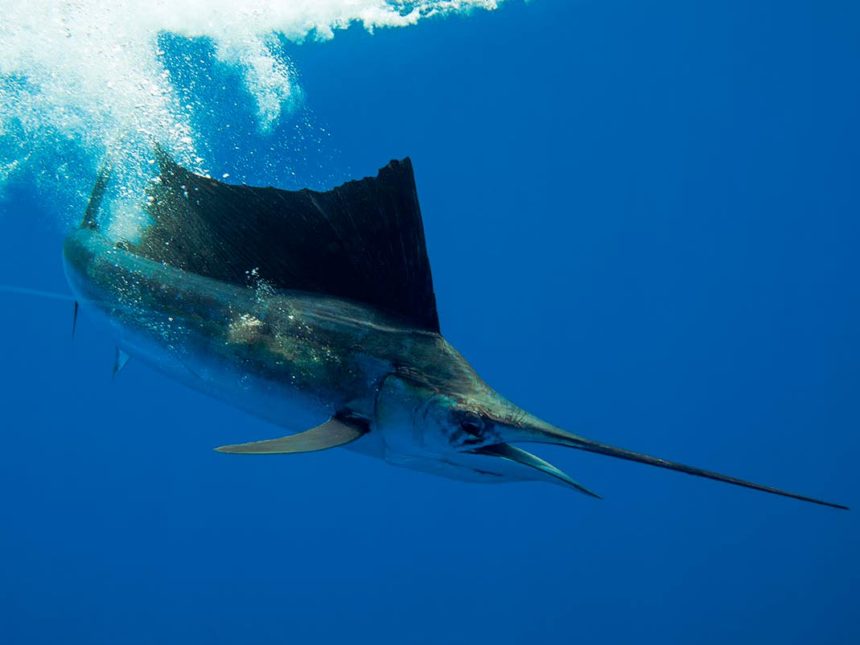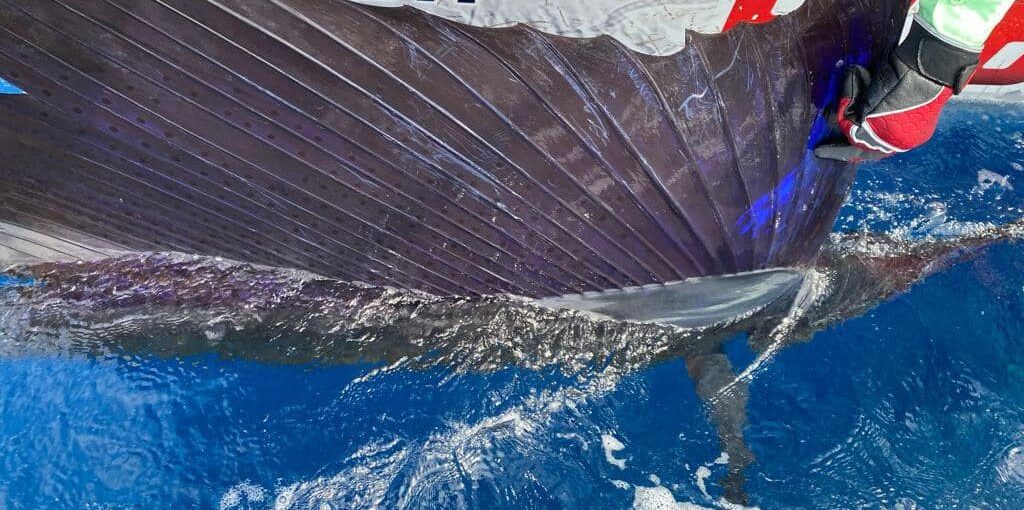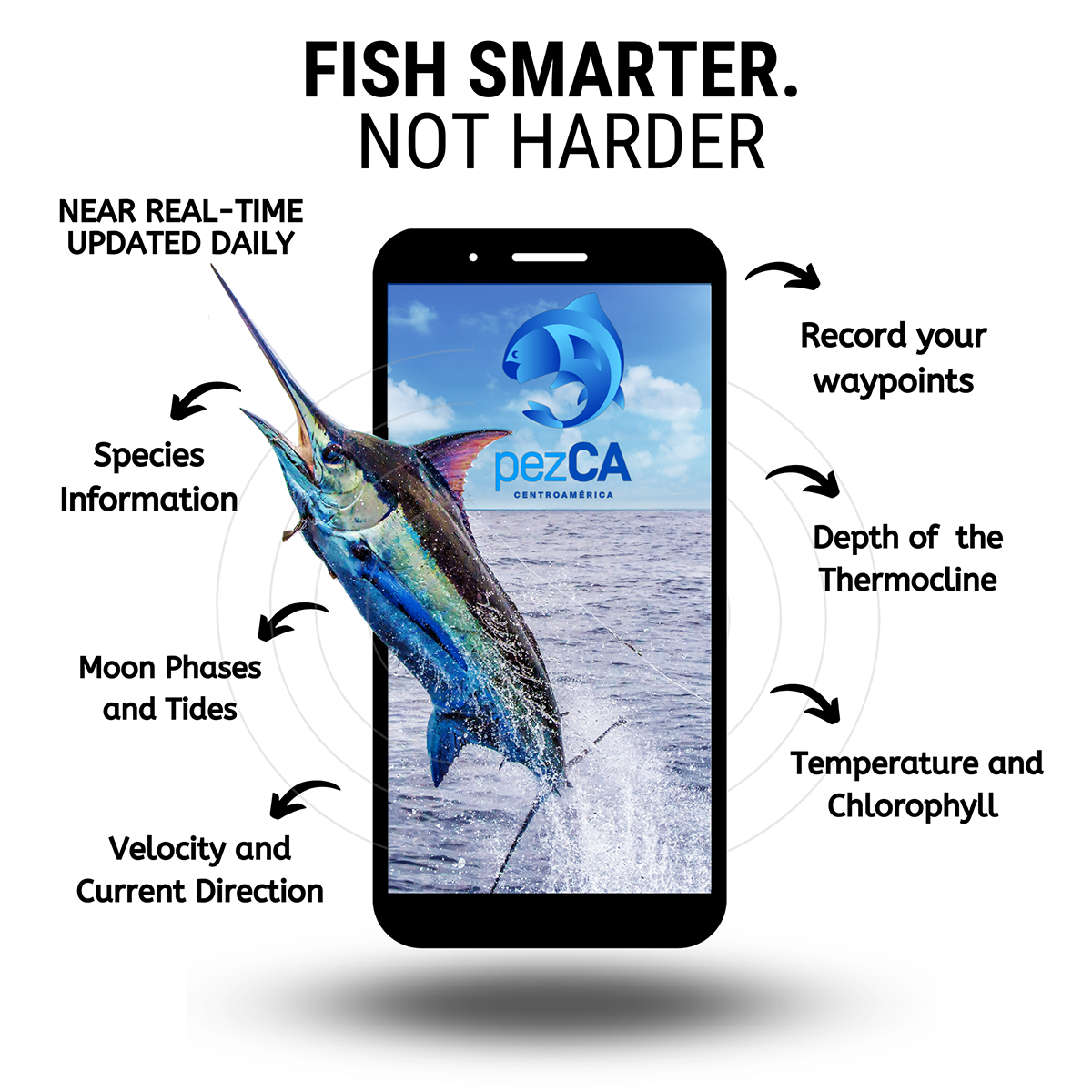FECOP is lobbying the Costa Rican government to ban the commercial sale of Pacific sailfish like this one.
Published for Marlin Magazine
An important special-interest organization presses for no-sale status in Central America
By Todd Staley
January 25, 2022
Pictured above – A large sailfish on the leader, jumping out of the water. Hannes Ribner
In September 2021, the Costa Rican Fisheries Federation—La Federación Costrricense de Pesca—urged the board of directors of INCOPESCA, the government agency in charge of the country’s commercial- and sport-fishing regulations, to ban the commercialization of sailfish in its waters because of their importance to sport fishing and the tourism bottom line.
The FECOP specifically asked INCOPESCA to maintain the current ban on sailfish exportation and to enact a total ban on sailfish landings—dead or alive—by the commercial fleet, while still allowing sailfish to be caught and released by registered sport-fishing charters and recreational anglers. It also requested that all other commercially harvested billfish be kept fully intact to help identify the species. Under the current regulations, only the billfish trunks are brought in, and a yearly estimation suggests that 17,500 of them are sailfish.

In a meeting with INCOPESCA, FECOP’s executive director, Dr. Marina Marrari, presented data that showed while catch-and-release fishing for sailfish was down 64 percent in the past decade, commercial harvests were up 126 percent over the same time frame. “Sailfish protection is long overdue in Costa Rica,” Marrari says, “[and] the species is declared of tourist interest in the fishing law—with strict rules in place for anglers—however, commercial fishing for them is still allowed.”
The Law
Article 76 of the Costa Rican fishing law states: “Sailfish, blue marlin, black marlin, striped marlin and tarpon are declared as species of tourist-sport interest.” And Article 72 of the law adds: “The executive authority of this Law shall impulse the conservation of species of sporting interest, realizing technical and scientific studies, and promoting sustainable management policies.”
“Sport fishing creates over 13,000 direct jobs in Costa Rica, and it is time to ban commercialization of sailfish to help populations recover and promote the reactivation of coastal economies that were hit especially hard during the [coronavirus] pandemic,” Marrari says. “Other countries in the region, such as Panama, Nicaragua, Guatemala, Mexico and the United States, have prohibited commercial fishing for sailfish and other billfish for more than 20 years, in many cases because they recognize the importance of protecting these species.”
INCOPESCA adopted measures in 2009 and 2014 that were intended to protect sailfish. Those regulations stipulate that anytime a commercial longline vessel places live bait on its hooks within 30 miles of the coast, it is considered fishing directly for sailfish. The regulations also prohibit commercial operations from fishing for bait in the sailfish-rich waters of the Gulf of Papagayo, Gulf of Nicoya and Golfo Dulce.
Currently, all sailfish brought to the boat alive by the commercial fleet are to be released. There is an incidental-catch allowance of up to 15 percent for sailfish on any given voyage, and these fish can be brought to dock and sold on the national market. Unfortunately, these allowances are often ignored, creating a loophole for illegal sales.
During the meeting, the disparity between the two sectors’ catch data was discussed, along with the style and methods of fishing being significantly different. The average sport-fishing boat typically fishes around six hours per day while trolling four to six individual lines. In comparison, a commercial longline vessel stays offshore for weeks at a time while soaking 10 to 20-plus miles of multihook lines for up to 24 hours. It is estimated that 11 percent of the country’s medium commercial fleet (licensed to fish just 40 miles out) and 8 percent of the advanced fleet (allowed to fish the territorial waters and beyond 40 miles out) both use live bait, equating to approximately 1.8 million hooks in the water.
Keeping Up with the Joneses
Sailfish are highly migratory, and any management plan should consider a regional approach. Costa Rica lags behind other neighboring countries when it comes to sailfish conservation, however. In Panama, the commercialization of all billfish is prohibited. Nicaragua prohibits the harvest of any sailfish or blue marlin. And Honduras, Belize, Mexico and the US all have billfish-conservation measures in place. In Guatemala, it is unlawful for the commercial fleet to possess any sailfish—a lead that was taken by the minister of tourism, who saw the value of sailfish to the tourism industry. In Costa Rica, sport fishing generates thousands of direct and indirect jobs, and injects more than $500 million annually into the nation’s economy.
FECOP is dedicated to promoting sustainable fishing practices and conservation through science and education, with a special interest in species important to sport fishing. A federation of fishing associations with more than 500 members in five regional councils, it actively works to support sport fishing and the conservation of marine species. It also promotes regulations and practices that protect marine life while still supporting jobs, as well as the responsible use of marine resources at the same time. In addition to the effort to decommercialize sailfish, the group has lobbied INCOPESCA to establish coastal zones in order to protect dolphin from tuna purse seines, and has also mounted a public-relations blitz to educate the public and visiting tourists on the problem of foreign vessels fishing illegally in Costa Rican waters. The FECOP has promoted sustainable fishing practices such as green-sticking within the commercial fleet to reduce bycatch, and during the pandemic, it also organized many food drives to help feed the seafood workers who were adversely effected by economic shutdowns. For more information, please visit fecop.org.























